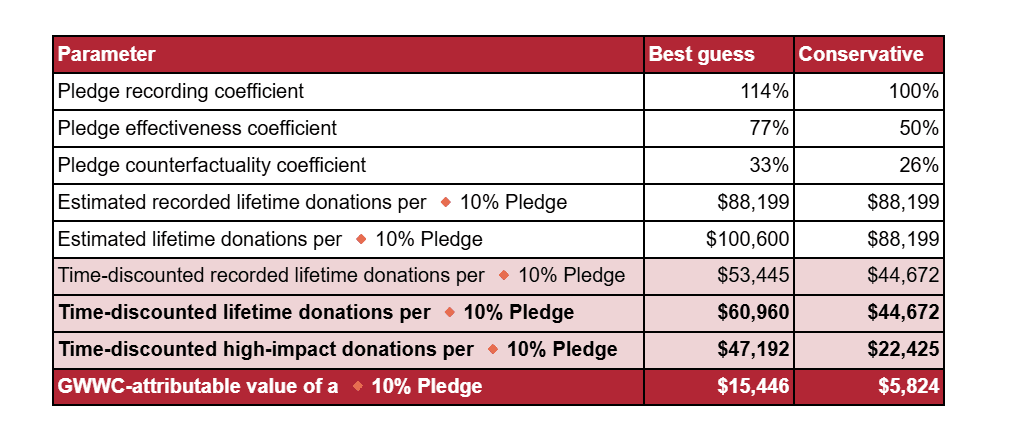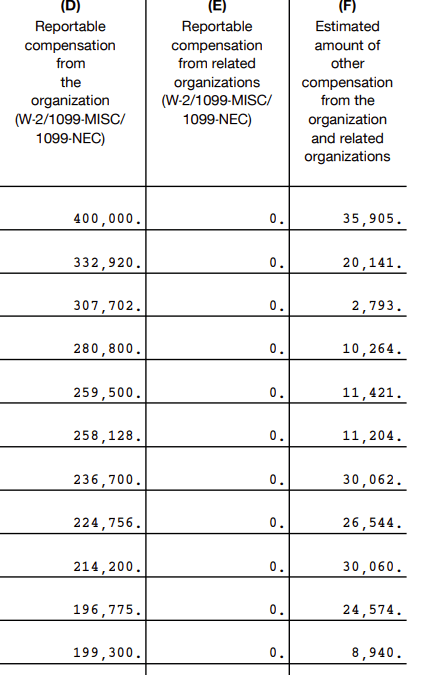Jason
Bio
I am an attorney in a public-sector position not associated with EA, although I cannot provide legal advice to anyone. My involvement with EA so far has been mostly limited so far to writing checks to GiveWell and other effective charities in the Global Health space, as well as some independent reading. I have occasionally read the forum and was looking for ideas for year-end giving when the whole FTX business exploded . . .
How I can help others
As someone who isn't deep in EA culture (at least at the time of writing), I may be able to offer a perspective on how the broader group of people with sympathies toward EA ideas might react to certain things. I'll probably make some errors that would be obvious to other people, but sometimes a fresh set of eyes can help bring a different perspective.
Posts 3
Comments2327
Topic contributions2
In particular, I genuinely feel like EA would have more traction if it distanced itself from the concept of pledging 10% because most people I feel like donate between $30-50$ per month not like thousands of dollars in a year.
For the population that is interested in giving a few hundred dollars a year, I suspect that individual-charity efforts without the EA branding or intellectual/other overhead are going to be more effective. So I don't think there is an either/or here; one can run both sorts of asks without too much interference between the two.
Although that's an estimate of how much counterfactual value "GWWC generates" from each pledge, which is less than the full value of the pledge. Elsewhere, it is called GWWC-attributable value. The full value is more like $47-60K on best guess.

Therefore I don't fundamentally think that donor orgs need to pay more to attract similar level of talent as NGOs.
Additional reasons this might be true, at least in the EA space:
- GiveWell, CG, etc. may be (or may be perceived as) more stable employers than many potential grantees. I'm pretty confident that they will be around in ten years, that the risk of budget-motivated layoffs is modest, and so on. This may be a particular advantage for mid-career folks with kids and mortgages who are less risk tolerant than their younger peers.
- It may be easier -- or at least perceived as easier -- to jump from a more prestigious role at a funder to another job in the social sector than it would be from a non-funder role. So someone in the private sector could think it less risky to leave a high-paying private sector job to work at GiveWell than to work at one of its grantees, even if the salaries were the same.
My - purely anecdotal - sense is that GiveWell pays more than many of its social sector peers.
To put some numbers on this, here is the data from GiveWell's 990 in 2023 -- these do appear to be the highest-paid eleven employees (which is not always the case on the 990)

I can count at least three types of public participation here --
- Talking to your friends and family (both in person and through one's own personal social media).
- Discussing things in a community of like-minded people (e.g., here).
- Discussing things in broader public spaces (e.g., most of Reddit).
(3) is the easiest to dispose of in my view. Although surely people have changed their minds about things on Reddit and in similar places given their massive size, I get the impression that debate subreddits and the like accomplish very little for the amount of effort people pour into them. People generally aren't going into these kinds of spaces with open minds. And the anecdotal poll you mentioned was conducted on Reddit; a truly random poll would presumably find online debate / discussion spaces to be even less important.
In contrast, people do make progress in like-minded spaces (2). But given that you find these spaces draining, the risk of them burning you out and distracting you from more effective activity presumably exceeds any sort of marginal benefit from active participation. No one can do everything. Each person has different aptitudes, passions, and limitations that influence what actions are best suited to them. It sounds like yours are not well aligned to active participation in discussions, and that's fine. It's important that someone conduct in-depth research, communicate it, and discuss it, but it's not important that any given person does so (especially if it doesn't align with their aptitudes, passions, and limitations).
As far as being up to date, I think it's fine to find someone you trust and defer to their judgment as to donation targets. There are respectable reasons to think the end results would be better than trying to do your own research -- especially if you're not feeling motivated to do in-depth research and analysis.
That leaves (1), which is neither of limited utility like in (3) nor can others clearly substitute as in (2). It would be ideal if you could briefly mention certain things without feeling preachy, moralizing, or cringe. And it might make you feel better in the long run to take small steps to be publicly living in accordance with your values -- not trying to "convert" other people, but not hiding those values in shame either. Maybe a post on your social media linking to (e.g.) GiveWell and identifying yourself as a donor could be a step in that direction?[1] if anyone thinks that "overly self-identified," that's a them problem, not a you problem! But I wouldn't say it is ethically insufficient to be quiet.
- ^
Others may have more helpful things to say about how to identify as a vegan in ways that you'd find not too uncomfortable. Whether justified or not, vegans do have a reputation in some circles as being "preachy, moralizing, or overly self-identified by" their veganism. As far as I know, effective givers do not have that kind of general reputation, and posting about a charity to which you donate is a normal thing for people to do at least in my non-EA social circles.
Thanks for the clarification; I struck that bullet point from my comment. Sorry that my phrasing didn't accomplish what I meant to say -- that a non-funding decision would be consistent with anything between the funder being strongly opposed to the organization and the funder concluding that it was just under their bar. I'm glad to hear PauseAI is doing better with fundraising than I thought.
Does the evidence support a conclusion that EAs as a whole have some sort of consensus that is against pause advocacy and/or PauseAI US? The evidence most readily available to me seems mixed.
PauseAI US' fundraising challenges suggest that the major funding sources are -- at a minimum -- not particularly excited about the org.[EDIT: Struck this out in light of Holly's comment below.]- I don't have any knowledge about PauseAI's success among rank-and-file EA donors (and PauseAI may not have good insight here either, given that donations don't come with an EA flag on them and the base rate of EA-aligned donations to a random org in the AI space may be hard to discern).
- PauseAI ranked very well in last year's donation election, although it didn't quite end up in the money.
Holly's posts relating to AI issues have on average received significant karma on net over the past ~2 years, such as:
- To be fair, other posts have low (but still positive) karma. Some of these I would characterize as sharp in tone -- to be clear, I am using sharp in a descriptive sense, trying to avoid any evaluation of the tone here. For example, the title and first paragraph of this post claim that a significant number of readers have been "[s]elling out," "are deluded," and need to "[w]ake up." My recollection is that sharply toned posts tend to incur a karma penalty irrespective of the merits of the perspective offered (unless the target is, e.g., SBF). But although the net karma on that post is only +3, that is on 60 votes -- suggesting quite a bit of upvotes to counter the downvotes.
- Holly also has some high-karma comments which express a lot of frustration with EA being too cozy with Big AI, such as this (+51) and this (+39). There are also comments with net negative karma, some of which are very sharp and some of which I think are not reasonably explainable on that basis.
There's of course much more to EA than the Forum, but its metrics have the advantage of being quantifiable and thus maybe a little less vibes-based than some competing measures.
(If the country being invaded is democratic and holds elections during wartime, this decision would even have collective approval from citizens, since they'd regularly vote on whether to continue their defensive war or change to a government more willing to surrender to the invaders.)
There's some force to this -- but in most cases only a minority of citizens are at risk of conscription. This is usually true on demographics alone -- e.g., men 25-60 in Ukraine, significantly narrower in 20th century US conscriptions -- and then is narrowed down further. A fair number of people who are demographically eligible know they would have discretionary exemptions or mandatory exclusions (e.g., based on disability, occupation, single parenthood, etc.). Those who would reap the benefits of not surrendering to invaders, but would not personally bear the costs of conscription, would be incentivized to vote for more than the optimal amount of conscription (and for undercompensating those who were conscripted).
They weren’t just replicating the effort of experts.
In fact, they were largely building off the efforts of recognized domain experts. See, e.g., this bibliography from 2010 of sources used in the "initial formation of [its] list of priority programs in international aid," and this 2009 analysis of bednet programs.


How are you doing on your target funding?